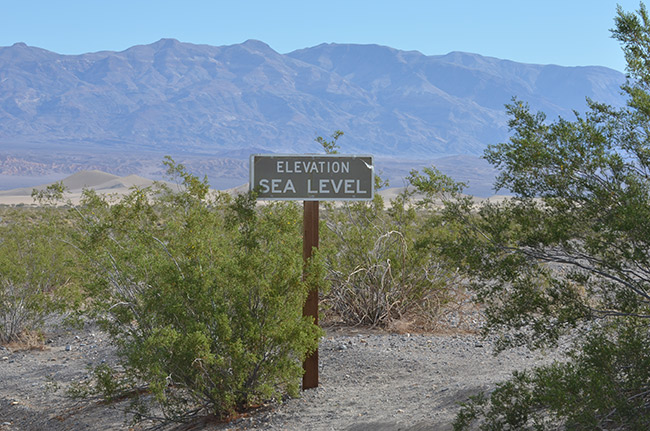Death
Valley National Park is
the largest national park in the lower 48 states, covering
3.34
million
acres
(5,219
square
miles).
The
park's
rich geologic
history, including
ancient
seas
and
volcanic
activity,
accounts
for
its
tinted
and
textured
landscape.
The
Valley is surrounded by the Panamint
Range on the West
and the Amargosa Range on the East. Badwater
Basin
is
the
lowest
point
in
North
America.
Telescope Peak in the Panamint Range rises
to 11,043 feet, and in
the winter it can get quite cold in the
mountains.
But
the
park
is
known
for
its hot, dry weather. Its website notes
that, "Summer
temperatures often top 120 degrees F (49 degrees C) in the
shade..." Ground temperatures get higher; the record was 201
degrees F. The mountains create a rain shadow in the Valley and
water is scarce; average annual precipitation is about
two inches. Despite the arid conditions, plants dot the desert
floor, and animals ranging from ants to coyotes make the park home, as
do members of the Timbisha Shoshone tribe. In the latter part of
the 19th century, mining ventures were started up. In 2016 1.3
million people visited the park. Death Valley
was made a National Monument in 1933 but
only became a National Park in 1994.
|


